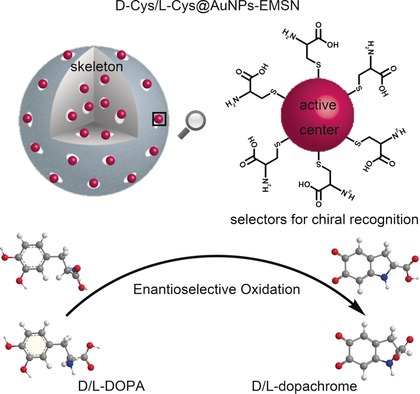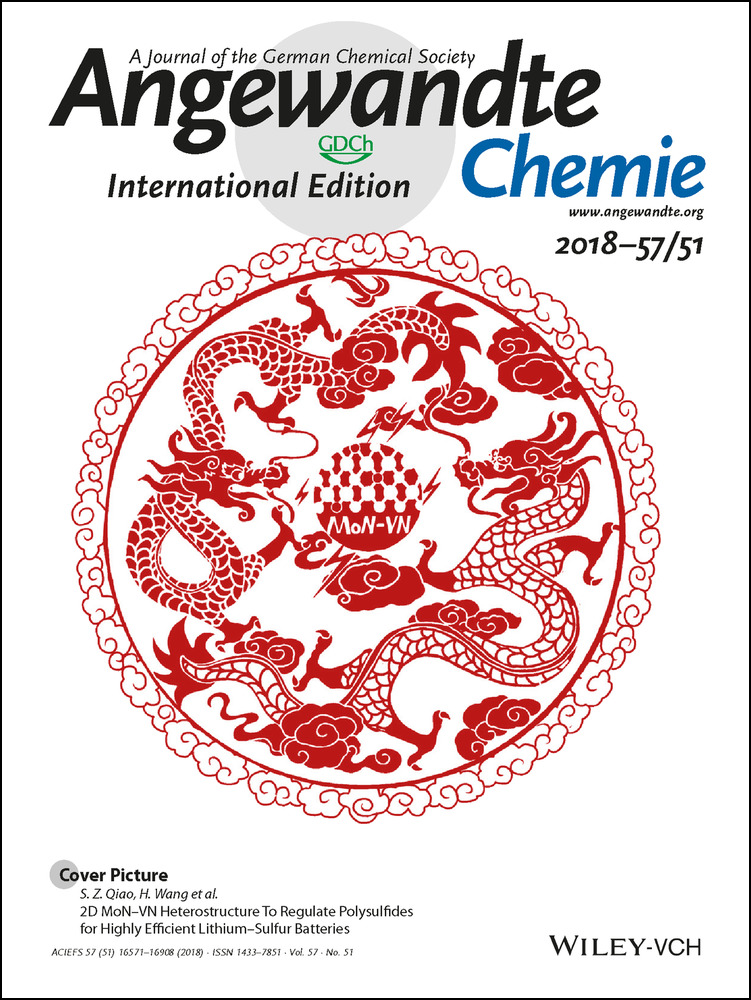Mesoporous Encapsulated Chiral Nanogold for Use in Enantioselective Reactions
Graphical Abstract
An enantioselective nanomaterial has been constructed. In the oxidation of chiral DOPA, the nanozyme with d/l-Cys shows preference to l/d-DOPA, respectively. Calculation of apparent steady-state kinetic parameters and activation energies together with molecular dynamics (MD) simulations showed that the different affinity precipitated by hydrogen bond formation between chiral Cys and DOPA is the origin of the chiral selectivity.
Abstract
Although various nanomaterials have been designed for biocatalysis, few of them can accelerate chemical reactions with high selectivity and stereocontrol, which remains them from being perfect alternatives to nature enzymes. Herein, inspired by the natural enzymes, an enantioselective nanomaterial has been constructed, with gold nanoparticles (AuNPs) as active centers, chiral cysteine (Cys) as selectors for chiral recognition, and expanded mesoporous silica (EMSN) as a skeleton of the artificial enzyme. In the oxidation of chiral 3,4-dihydroxy-phenylalanine (DOPA), the nanozyme with d-Cys shows preference to l-DOPA while the artificial enzyme with l-Cys shows preference to d-DOPA. Subsequent calculation of apparent steady-state kinetic parameters and activation energies together with molecular dynamics (MD) simulations showed that the different affinity precipitated by hydrogen bonding formation between chiral Cys and DOPA is the origin of chiral selectivity.





